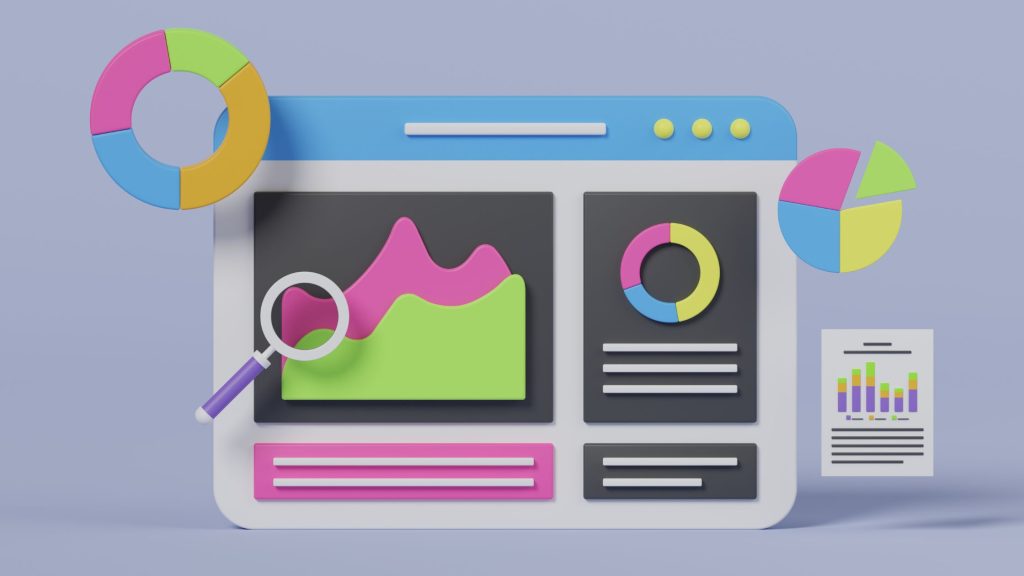Data-driven decision-making (DDDM) is a shift from relying solely on intuition and past experiences toward a more analytical approach that leverages concrete information to guide business strategies.
From Intuition to Analytics
For generations, business leaders have celebrated the power of intuition. As Tim Stobierski notes, “Society has imbued the concept of ‘intuition’—of simply knowing when something is right or wrong—with a tremendous amount of prestige, importance, and influence.” He observes that this romanticization of ‘gut feeling’ has influenced how we perceive the “geniuses” of our time, from Albert Einstein to Steve Jobs, both frequently quoted on the value of intuition. He concludes: “though intuition can be a helpful tool, it would be a mistake to base all decisions around a mere gut feeling.”
There are no doubts about his conclusion, while intuition can provide an initial spark or direction, it’s through data that businesses can verify, understand and quantify their decisions. According to a PwC survey cited by Stobierski, “highly data-driven organizations are three times more likely to report significant improvements in decision-making compared to those who rely less on data.” This statistic alone shows the tangible advantages of embracing a more analytical approach.

What Is Data-Driven Decision-Making?
At its core, data-driven decision-making is the process of using data to inform your decision-making process and validate a course of action before committing to it. It does not necessarily replace intuition; it instead offers intuition access to a larger body of data to verify, understand and quantify. Data-based decision-making empowers businesses to generate real-time insights and predictions to optimize their performance. This way, they can assess the success of different strategies and make informed business decisions for sustainable growth.
According to ExplodingTopics, Humanity generates over 402.74 million terabytes of data daily, or 2.5 quintillion bytes of data, according to Domo. DDDM is enabled by a massive amount of data that has been accumulated or is being accumulated by humanity. Narrowly, organizational data provides a pool from which organizations to draw insights that can be used to acquire and retain users effectively, enhance their experience and unlock hidden revenue.
This approach manifests in various ways across different organizations:
- Collecting customer feedback through surveys to identify desired products or features
- Conducting user testing to observe how customers interact with products and services
- Testing new offerings in limited markets before full-scale launches
- Analyzing demographic shifts to identify business opportunities or threats
The Case of Starbucks
Starbucks is often cited as a premier example of data-driven decision-making transformation across multiple business aspects. As detailed by Towards Machine Learning, “While the coffee beans are used to brew addictive coffees, Starbucks uses the ‘data beans’ primarily for these purposes: Expansion, Personalization and Innovation.” After the difficult decision to close hundreds of stores in 2008, then-CEO Howard Schultz insisted on a more analytical approach moving forward. Today, Starbucks employs a sophisticated system called Atlas. The system was developed by location-analytics company Esri. It works by analysing population density, average incomes and traffic patterns to determine ideal store locations and predict potential impacts on existing stores.
Beyond expansion, Starbucks also harnesses data for personalization through its rewards program and mobile app. These platforms generate insights about customer preferences that power their “Digital Flywheel” program, which uses AI to offer personalized recommendations based on purchase history, weather, time of day, and special occasions. The company’s commitment to data extends to product innovation as well. For example, analysis revealed that 43% of tea drinkers don’t add sugar to their tea at home led to the creation of unsweetened ice tea K-Cups.

Key Benefits of Data-Driven Decision-Making
1. Enhanced Decision Confidence
When decisions are backed by comprehensive data analysis, business leaders can act with greater confidence. By removing subjective elements and biases from business decisions, organizations can commit fully to strategies without second-guessing.
2. Proactive Business Stance
While data analysis often begins as a reactive process, organizations that master data-driven decision-making can eventually shift to a more proactive posture. With sufficient practice and quality data, businesses can identify opportunities before competitors and detect potential threats before they become serious problems.
3. Significant Cost Savings
According to a survey of Fortune 1,000 executives conducted by NewVantage Partners for the Harvard Business Review, data initiatives aimed at decreasing expenses have shown remarkable success. More than 49% of organizations pursuing cost-reduction through data reported achieving value from these projects. Randy Bean, CEO of NewVantage Partners, noted that “Big data is already being used to improve operational efficiency, and the ability to make informed decisions based on the very latest up-to-the-moment information is rapidly becoming the mainstream norm.”
4. Improved Business Outcomes Across Departments
Marco Costa, CEO at Exclaimer, highlights in his Forbes article how data-driven approaches transform specific business functions:
- Marketing: “Data analytics can revolutionize strategy by identifying precise target audiences, customizing marketing messages and optimizing ad spending for maximum impact.”
- Operations: “Insights derived from data can optimize processes, cut expenses and improve the allocation of resources.”
- Finance: “Data analytics is crucial for managing risk, making investment choices and planning finances strategically.”
As Costa emphasizes, “Think of data as the real voice of your customer. Use it to get new customers, make your existing customers happier and develop your product effectively. Only then will you unlock efficient scaling.”

Implementing Data-Driven Approaches in Your Organization
Transitioning to a data-driven organization requires more than just technology investments. Here are key steps to consider:
1. Develop a Data-Centric Culture
Implementing data-driven decision-making requires more than just investing in technology and analytics tools; it demands a cultural shift within the organization. This involves fostering continuous learning, encouraging collaboration between data scientists and business stakeholders, and promoting data literacy throughout the company.
2. Master Data Visualization
Stobierski emphasizes that “data visualization is a huge part of the data analysis process. It’s nearly impossible to derive meaning from a table of numbers.” Learning to create effective visualizations through charts and graphs enables quicker identification of trends and facilitates more intuitive understanding of complex data relationships.
3. Prioritize Data Governance
Establish robust data management practices that ensure data quality and integrity. This includes creating clear policies for data collection, storage, and usage, along with implementing measures to protect data privacy and security.
4. Address Common Challenges
Organizations often face several obstacles when implementing data-driven approaches:
- Resistance to change: Employees may be reluctant to abandon familiar decision-making methods
- Skills gaps: Lack of data literacy and analytical expertise can limit implementation
- Privacy concerns: Navigating complex data regulations requires careful attention
- Data silos: Information trapped in isolated systems prevents comprehensive analysis
Overcoming these challenges requires investment in data infrastructure, establishment of governance frameworks, ongoing training for employees, and fostering a culture of transparency regarding data usage.

Looking Ahead: The Future of Data-Driven Decision-Making
The importance of data-driven decision-making will only continue to grow. For businesses looking to remain competitive, embracing data analytics is no longer optional. As research consistently demonstrates, companies that embrace data-driven approaches outperform those relying primarily on intuition. In an increasingly data-rich business environment, the question is no longer whether to adopt data-driven decision-making, but how quickly and effectively your organization can implement this essential approach. By starting with small initiatives, benchmarking performance, documenting processes and continuously improving your analytical capabilities, your business can harness the transformative power of data to drive innovation, enhance operational efficiency, and achieve strategic objectives in today’s competitive landscape.

